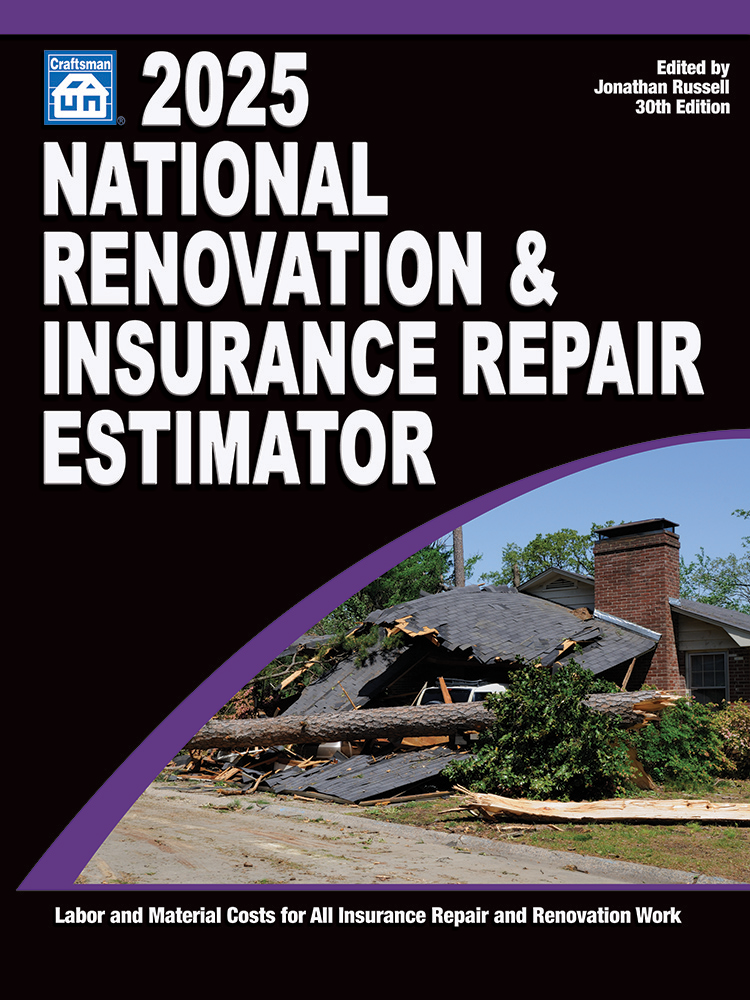ThermaPure Litigation Report
ThermaPure has many patents, but most or all of the litigation was based on the 812 patent








(This article is for general informational purposes and is not intended to be legal advice. Legal questions should be directed to a licensed attorney. This article contains highlights and is not intended as a statement of the results of all cases.)
The lawsuits filed by ThermaPure, Inc. were the biggest legal news to hit the restoration industry since Melinda Ballard was awarded $32 million from a Texas court in 2001. The first big development was ThermaPure’s 2009 victory in Texas against Water Out Drying Corporation for inducing infringement of patent. The jury found that Water Out had induced infringement of U.S. Patent No. 6,327,812, commonly referred to as “the ‘812 Patent” and entitled Method of Killing Organisms and Removal of Toxins in Enclosures.
The Abstract to the ‘812 Patent describes it as follows:
“A method and kit of components for destroying organisms and toxins in from [sic] an enclosure such as a building. Temperature sensing probes are installed in the enclosure to indicate structure temperature and a recorder is used to record the temperature of said sensing probes in real time. Hot air is introduced into the enclosure through one or more ducts to raise the structure temperature to at least about 120°F., as monitored by the temperature sensing probes. This is sufficient to kill essentially all insects, bacteria, virus, dust miles, spiders, silver fish, fungi and toxic molds such as aspergillus oryzae, aspergillus terreus, aspergills [sic] versicolor; cladosporium hergbarum [sic]; stachybotrys chartarum, penicillium aurantiogriseum, pencillium chrsogenum [sic], pencillium glabrum and fusarium oxysporum, and the like. The air can exit through open doors and windows or through ducts to a filter assembly that captures the remains of the organisms. Ozone may be added to the heated air to improve efficiency. Preferably, air when extracted from an egress duct downstream of the filters improves air flow through the enclosure and filters. A typical building can be treated in six to eight hours.”
Claim 6
ThermaPure has many patents, but most or all of the litigation was based on the ‘812 patent. In order to prevail in a patent infringement suit, the plaintiff must prove that the defendant infringed on each element of a claim within the patent. In other words, five out of six will not suffice. The claims define the patent. The claims are the only things that can be infringed. Specifically, Water Out was found to have induced infringement of Claim 6 of the ‘812 Patent, which was the basis of many of the ThermaPure lawsuits. Claim 6 consists of six elements:
“A method for sanitizing an enclosed structure having an exterior and an interior, comprising the steps of: preparing said enclosed structure for exposure to a high temperature gas by removing or protecting all heat sensitive items; disposing a plurality of temperature indicating probes at predetermined locations within said enclosed structure; heating a gas to a predetermined temperature; directing said heated gas into said enclosed structure in order to raise the temperature within said enclosed structure to said predetermined temperature; monitoring the temperature detected from said probes in real time to ensure that all portions of said enclosed structure reach said predetermined temperature; venting said heated gas from said enclosed structure; and Filtering said heated gas vented from said enclosed structure.”
The Texas jury did not find that the infringement induced by Water Out was willful. The court found that Claim 6 was not invalid. However, there was a hung jury on the issue of monetary damages. The court ordered a new trial on the issue of damages, which never occurred because Water Out filed for protection under Chapter 11.
Objects of the ‘812 Patent
The stated objects of the ThermaPure process, according to the ‘812 patent, are to:
- Provide a non-toxic method for destroying organisms, including mold and insects;
- Remove substantially all of the remains of the killed organisms from open areas in the structures;
- Filter gases leaving the enclosure;
- Destroy the organisms in a relatively short period; and
- Monitor the temperature level to assure that all areas reach the predetermined effective temperature.
Potential Defenses
There are a variety of potential defenses available to a party that has been sued for patent infringement. The obvious one is “non-infringement.”
As explained above, Claim 6 states that the process involves the real-time monitoring of the temperature from a group of temperature-indicating probes placed at predetermined locations within the structure. ThermaPure has stated that measuring the delivery of the heat is vital to the efficacy of the ThermaPure process because it assures uniformity of the heat and that the target temperatures have been achieved. A contractor who uses heat but does not engage in “real-time monitoring of the temperature with a group of temperature-indicating probes placed at predetermined locations” may argue that he or she has not infringed on ThermaPure’s Claim 6.
Validity of the Patent
Another defense to a patent infringement claim is that the patent is invalid. For a patent to be valid, the invention must have utility, novelty and not be obvious. A method is considered obvious if, at the time of the invention, there was a known problem for which there was an obvious solution encompassed by the patent’s claims. Due to recent changes in case law, it is now easier for judges to declare something “obvious,” and it is a fairly frequent outcome now.
Most importantly, a person shall not be entitled to a patent if the “invention” was known or used by others before the patent application; or the “invention” was patented or described in a publication more than one year prior to the date of the patent application (“prior art”). The validity of the ThermaPure patents was hotly contested. The following articles, among many others, were offered by defendants in the ThermaPure cases as evidence of prior art:
- Heat as a Means of Controlling Mill Insects (1911)
- Studies in Termite Control (1922)
- Insect Control in Flour Mills (1958)
- The Way Things Work (1967)
- Treatment of Process Air for Deep Culture (1969)
- Heat Sterilization as a Control for Stored-Grain Pests (1984)
- Heat Treatment for Powerpost Beetles (1989)
Nine months after the ‘812 patent was issued, its inventor filed an application for a new patent. The application stated that the methods used in the ‘812 patent “are not effective for…organisms, such as fungi, and toxic molds….” and that “many such fungi, molds and the like are a serious health hazard even when dead.” This application is one of the documents that led to the issuance of another patent, “the ‘491 patent.” The ‘491 patent is described as a “continuation-in-part” of the ‘812 patent.
The ‘491 patent states: “It is well-known that the heated air causes certain molds, fungi, etc. to sporulate, thus releasing spores into the structure and thus dispersing the harmful biological agents and possibly contaminating the structure to a greater degree than originally presented.” It further states that “the use of positive pressure within the structure, as described [in the ‘812 patent] further increases the likelihood that biological contaminants will be dispersed throughout the structure” and that “it is not desirable to release such contagions into the air.” A party sued for infringing on the ‘812 patent may argue that its own inventor has declared it ineffective and dangerous.
California Litigation
On January 14, 2011, ThermaPure Inc. filed a lawsuit in California against Coast to Coast Water Damage Restoration, Inc. and the four other contractors listed on the Water Out website as California service providers. The suit alleged infringement of the ‘812 Patent. The suit alleged that ThermaPure is in the business of using heat to remediate homes and commercial buildings so that they are “free of mold, viruses, bacteria [and] insects.” It also alleged that “ThermaPure’s patented and proprietary processes are also used in construction dryout….” However, the ‘812 patent, does not claim that the process will dry buildings. Two of the defendants in the January 2011 California case defaulted and ThermaPure obtained default judgments of $210,000 and $28,000 and injunctions against them. In this author’s experience, default judgments are very difficult to enforce. ThermaPure dismissed the three other defendants, and entered a confidential settlement with at least one of them which also stipulated to an injunction. The case did not go to trial.
Illinois Litigation
In 2010, ThermaPure filed suit in Illinois against Temp-Air, Inc., Giertsen Company of Illinois, Inc., Servpro Industries, Inc., Mallory Sun, LLC a/k/a Servpro of Downers Grove and Oak Brook, Disaster Kleenup International, Inc. (DKI), Dri-Eaz Products, Inc., RxHeat, LLC, Cambridge Engineering, Inc., and Jon-Don, Inc. DKI and ThermaPure settled and DKI was dismissed on December 21, 2010.
Among other things, the suit alleged that:
- The defendants directly and/or indirectly infringed at least claims 4 and 6 of the ‘812 patent by making, using, selling and/or offering to sell heat technology remediation services which include all elements of such claims.
- Giertsen, Temp-Air, RxHeat and Jon-Don also directly and/or indirectly infringed on claim 9 of ThermaPure’s ‘148 patent by making, using, selling and/or offering to sell heat technology remediation services.
- Temp-Air, Servpro, DKI, Dri-Eaz, RxHeat, Cambridge and Jon-Don had also contributorily infringed or induced infringement of one or more ThermaPure patents in violation of federal law by offering equipment, instruction and/or services through their Web sites and at trade shows.
ThermaPure sought royalties as compensation for the infringements, plus prejudgment interest and a permanent injunction prohibiting further infringement. Federal law allows for damages “adequate to compensate for the infringement,” which, in some cases, includes lost profits. The defendants filed counter-claims for non-infringement and invalidity of both patents. The second biggest piece of legal news since Ballard was the series of victories for a number of companies sued by ThermaPure.
Victory for Temp-Air
On November 23, 2011, a Consent Judgment was entered between ThermaPure and Temp-Air Inc. in Minnesota. The Judgment was the result of a settlement agreement but included a number of important statements of fact, which became findings and conclusions of the court:
- Temp-Air has not directly infringed the ‘812 and ‘148 patents through making, using, selling or offering to sell any Temp-Air product or service;
- Temp-Air has not induced or contributed to and is not inducing to or contributing to the infringement of the ‘812 and ‘148 patents by another through any act of Temp-Air or sale or offer for sale of any Temp-Air product or service;
- Judgment is entered for Temp-Air and against ThermaPure on ThermaPure’s claims of infringement of the ‘812 and ‘148 patents; and
- No appeal shall be taken by any party from this Consent Judgment, the right to appeal being expressly waived by all parties.
In effect, this is a full “not guilty” verdict for Temp-Air, which specifically advertised the use of heat to kill bedbugs at 120-135°F with real time remote temperature-monitoring sensors.
Further, a November 30, 2011 press release from Temp-Air stated: “The settlement does not require Temp-Air to pay anything to ThermaPure or to take a license from ThermaPure.”
Victory for Servpro
On May 4, 2012 the United States District Court in the Illinois recorded a consent judgment of non-infringement in favor of Servpro. Based on a stipulation of the parties, the court made the following conclusions of law: that Servpro has not directly infringed and is not directly infringing the ‘812 patent through the making selling or offering any product or service; and that it did not induce the infringement of the ‘812 patent. The court entered judgment for Servpro and against ThermaPure on ThermaPure’s claims of infringement of the ‘812, and decreed that no appeal may be taken from this judgment, and that the judgment shall finally conclude and dispose of all claims against Servpro by ThermaPure with prejudice. Servpro’s counterclaims against ThermaPure were dismissed without prejudice.
Victory for Jon-Don
In the course of the Illinois litigation, ThermaPure accused Jon-Don of infringing the ‘812 Patent through the sales of products including the Rx15 Heater, Defendair HEPA 500, Phoenix Guardian HEPA System, Enviroboss, The Dragon, Phoenix Firebird and several others. On May 14, 2012, the court entered a Consent Judgment of Non-Infringement in favor of Jon-Don, concluding that Jon-Don did not directly infringe or induce infringement. The Judgment disposed of the litigation and ThermaPure’s claims against Jon-Don were dismissed with prejudice. Like ServPro’s counterclaims, Jon-Don’s counterclaims against ThermaPure were dismissed without prejudice, and the Judgment is not appealable.
Victory for Dri-Eaz
Similarly, on May 31, 2012 the court in Illinois entered a Consent Judgment in favor of Dri-Eaz, finding that its sale of products, including the LGR 2800i and 3500i Dehumidifiers, Dragon K85 and X2 and numerous others, as well as the Dri-Eaz educational programs did not infringe on the ‘812 patent, directly or indirectly. The Judgment finally concluded and disposed of this litigation as to Dri-Eaz and ThermaPure.
Despite the major victories in the seminal cases, ThermaPure’s ‘812 Patent has not been invalidated. It is far better to invest a modest amount of time and money to avoid patent infringement than to defend a costly, time-consuming patent infringement lawsuit later. The general consensus is that it costs approximately $1 million dollars to defend the typical patent infringement case. Patent law can be confusing, which causes many to bury their heads in the sand instead of investigating potential patent infringement issues up front, which is a decision that could bankrupt a business.
In this author’s opinion, ThermaPure litigation will not dominate the legal landscape in the restoration industry in 2013. The industry can now turn its sights on other pressing matters of broad financial significance to the industry as a whole, such as mortgage holder retention of insurance loss proceeds, which is a topic we will cover in an upcoming edition of Cross Examination.
Looking for a reprint of this article?
From high-res PDFs to custom plaques, order your copy today!












